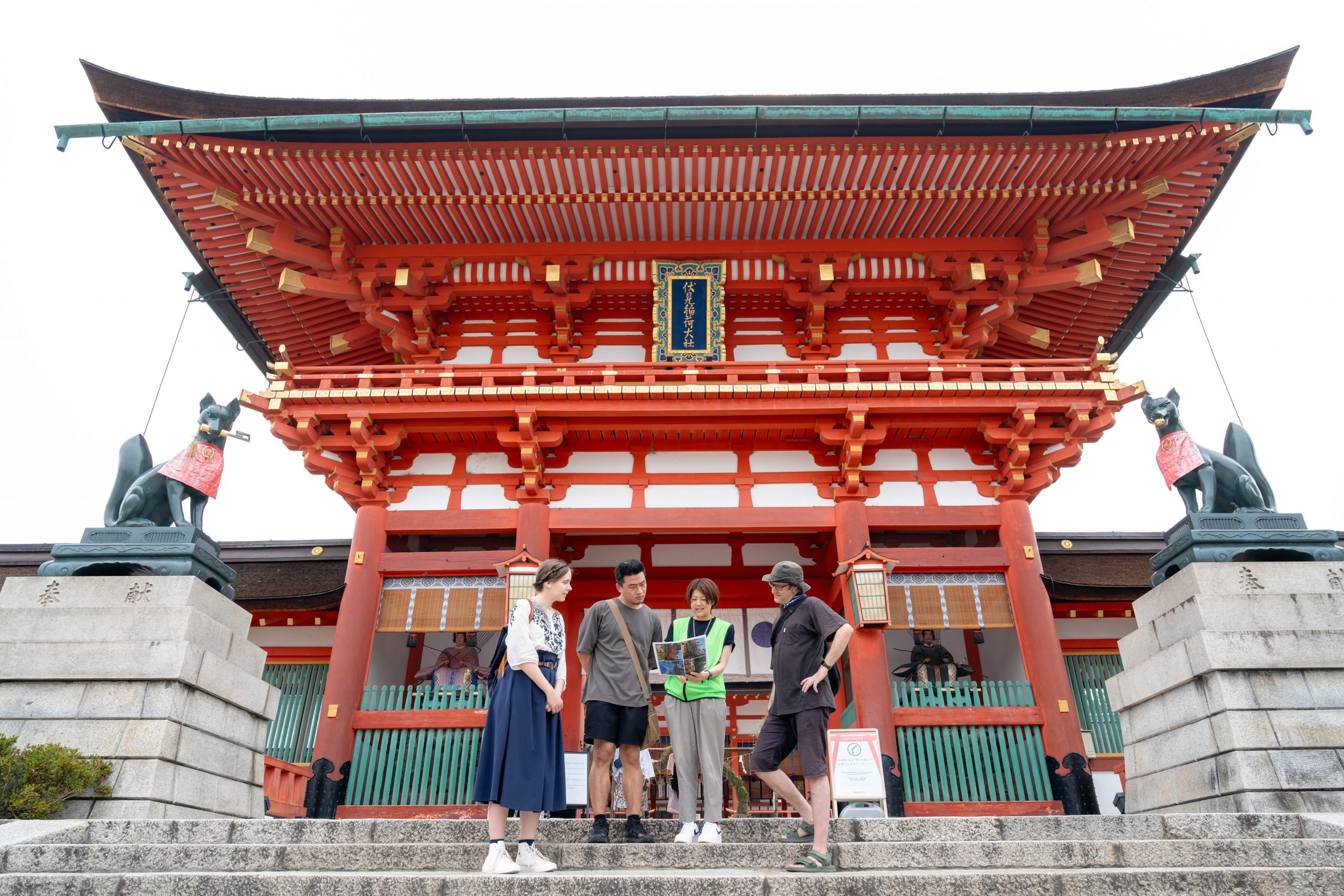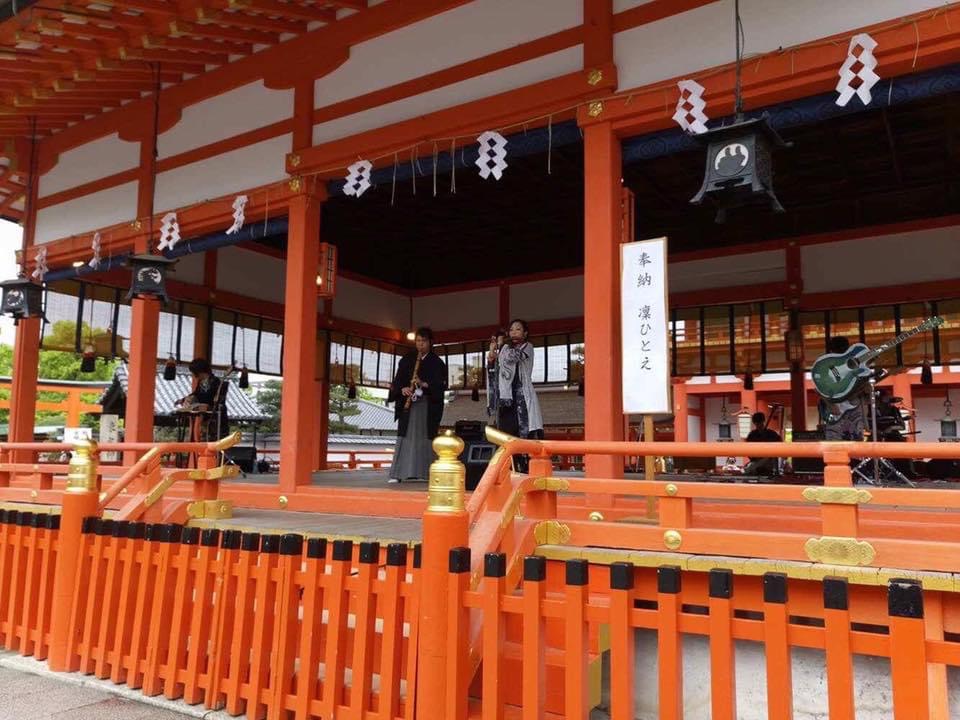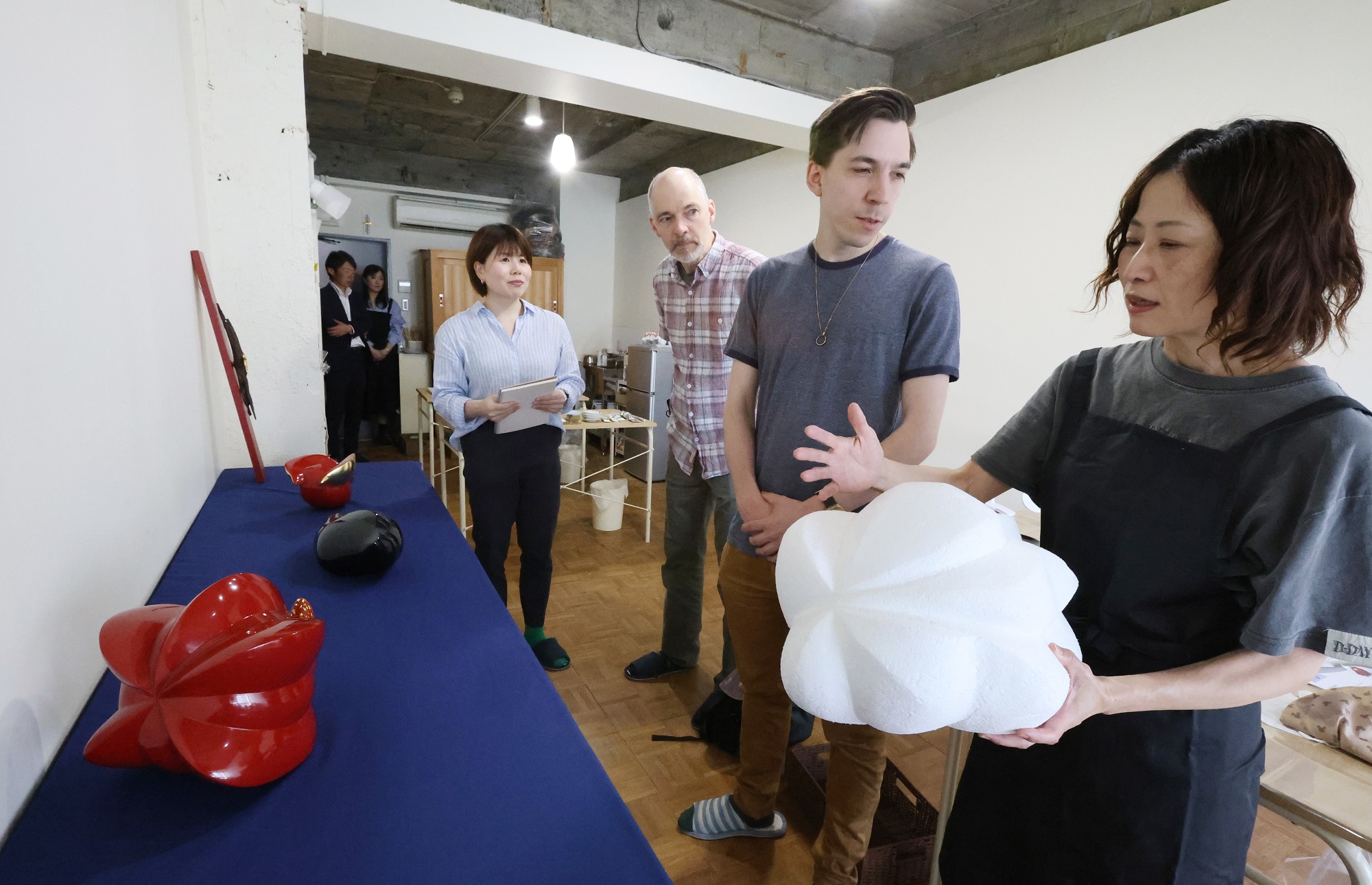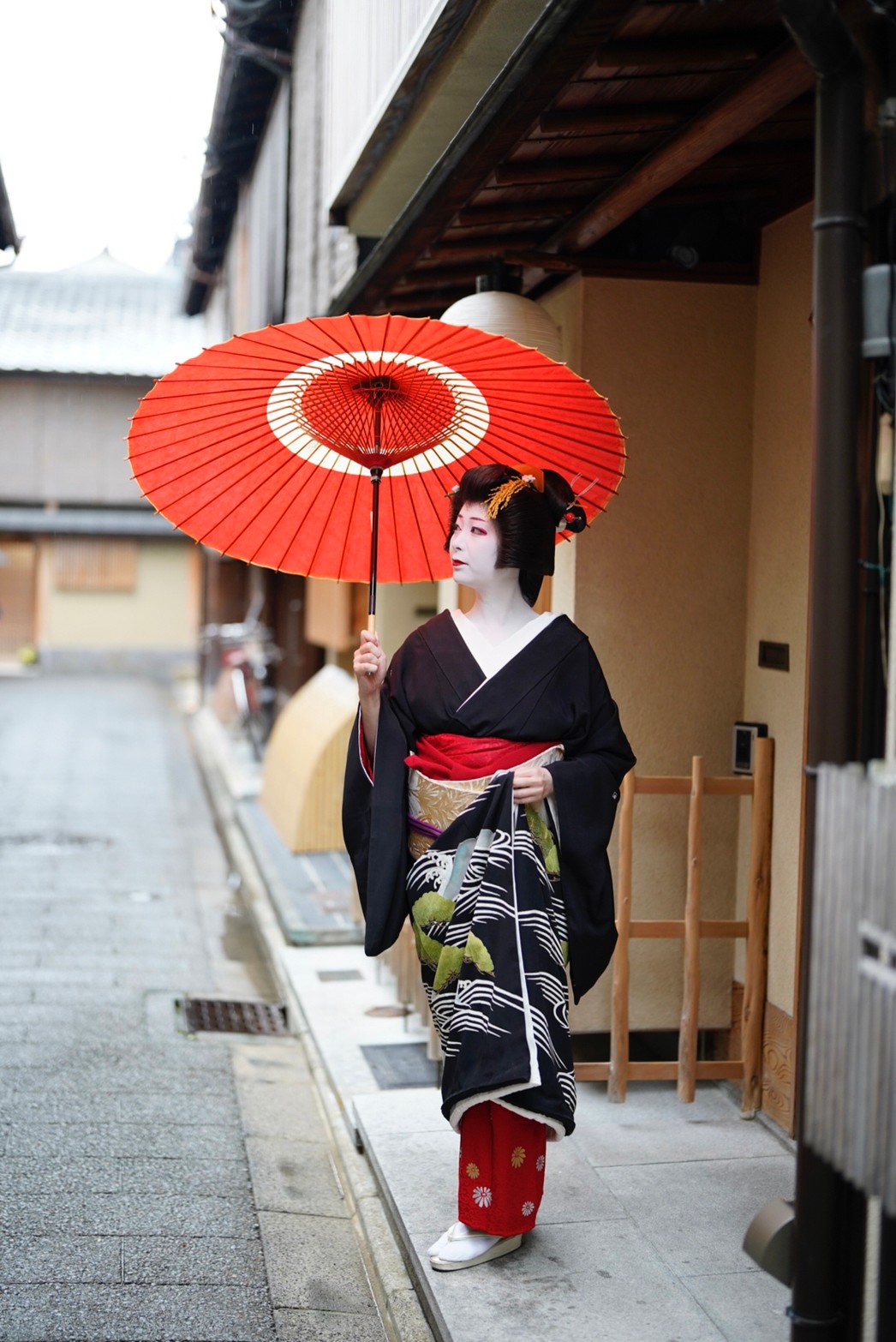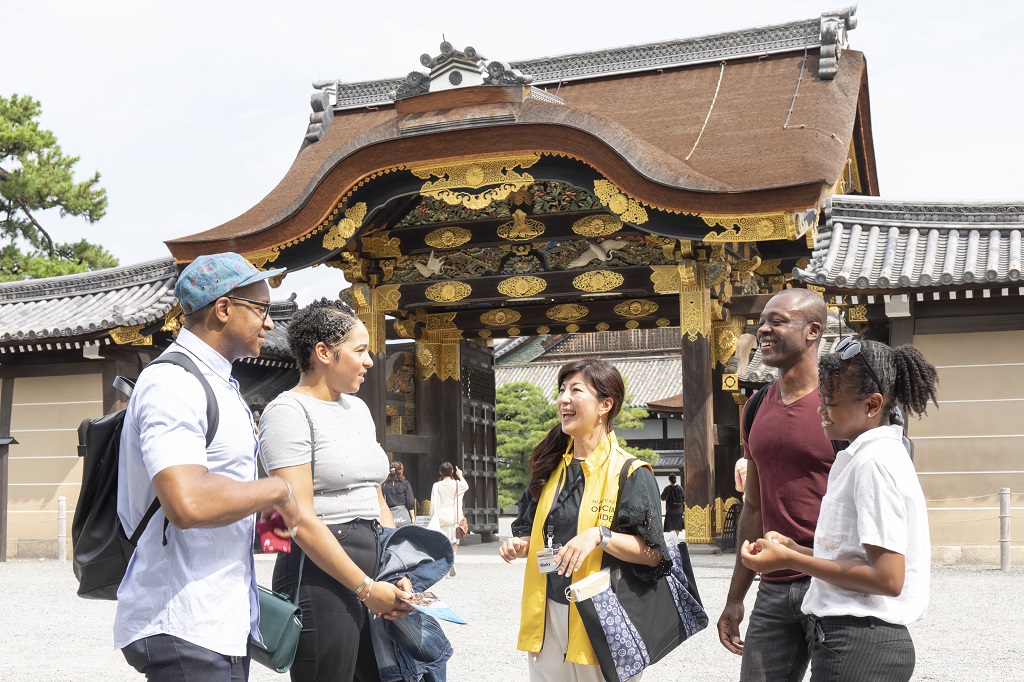
Learn about Kyoto from the experts with a guided tour into some of the city’s secrets! This time, follow an expat living in Kyoto as he discovers the story behind Kyoto’s magnificent Nijo-jo Castle, and even takes a peek into a typically restricted area! See details on how to participate below.
Kyoto’s Castle
I’ve lived in Kyoto for about two years now and it never fails to surprise me. The city is home to many temples and shrines, amazing restaurants and cafés, and museums galore! There’s so much to do and see, and everything is constantly changing with each of the seasons, so it can be hard to keep up. One place in the city that remains beautiful—and open!—year-round is Nijo-jo Castle.
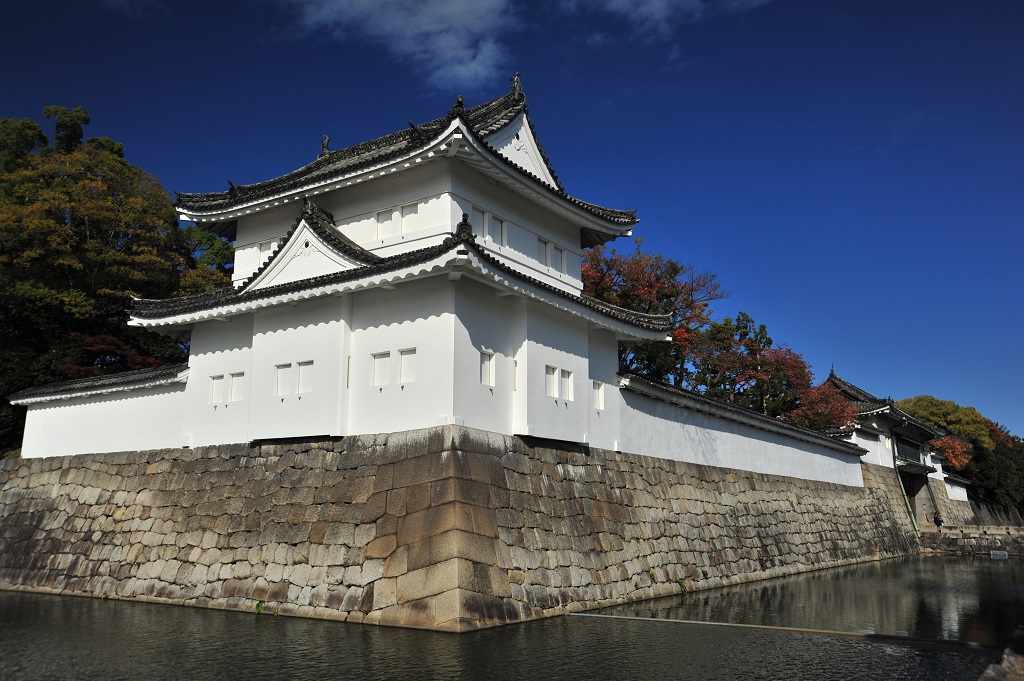
With its large white walls and enormous east gate, Nijo-jo Castle does not fail to impress. Seeing how grand the entire structure is, it’s pretty clear what kind of people used to live here. Although this was my second visit to the castle, on this particular Saturday I joined the castle’s official English guided tour! With just a few other participants in tow, I was particularly lucky that day to get (almost) my own private guide.
Our guide, born and raised in the city, was extremely knowledgeable and personable. She was one of Kyoto’s certified guides, a Kyoto Visitors Host (KVH) . These guides go through very thorough training, and it was obvious in my guide’s explanations. With not only her knowledge, but the thoughtful way in which she told us the story of the castle, she really brought it to life and put history into context.
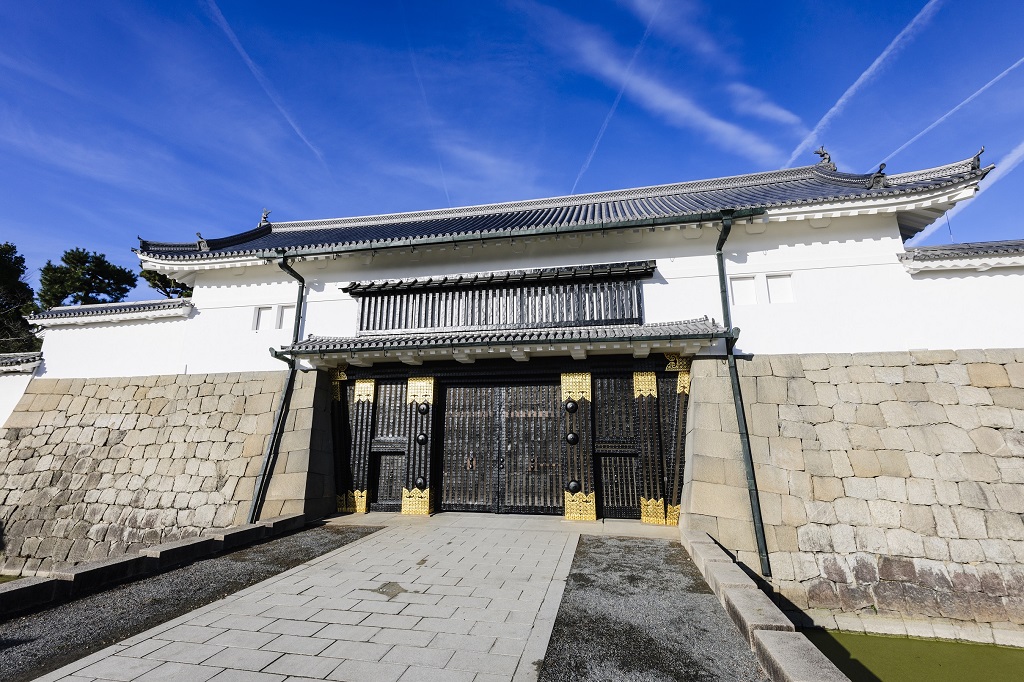
Starting the Tour
We started off by backtracking a little bit and taking a look at the castle’s east gate. Our guide gave us some background about Japanese history and the social structure of the country at the time that the castle was built. Entering a castle or historical facility like that on my own, I often enter blind, with very little historical context, let alone knowledge of social structures. Her explanation about the power balance (or lack thereof) between the shogun and the emperor really made me understand why the castle came to be built where it was.
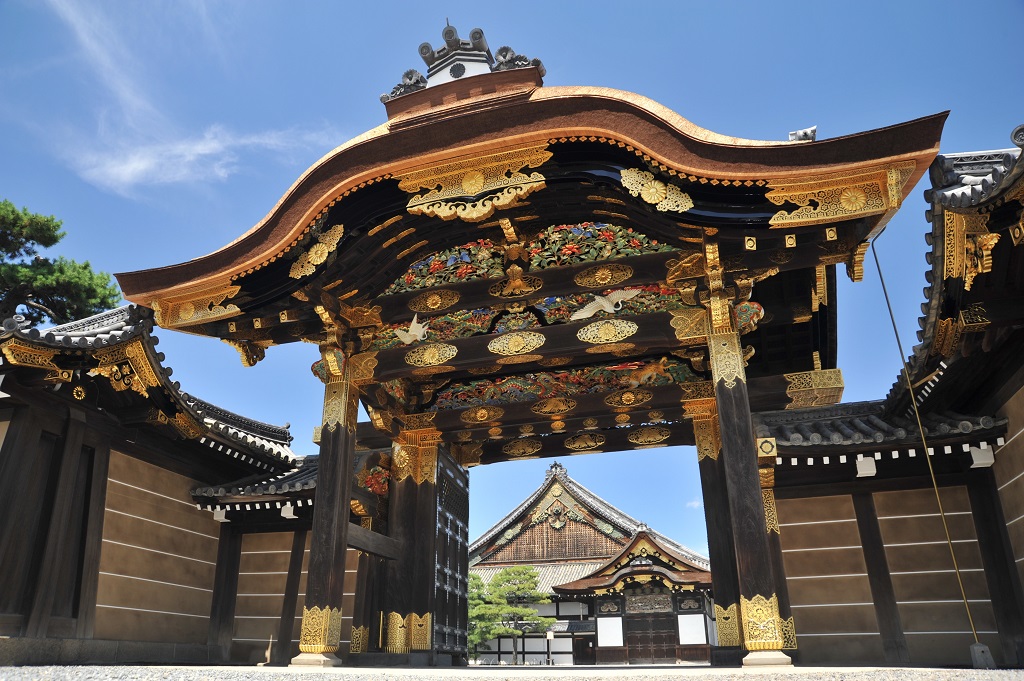
After our introduction, she led us through the castle grounds: through the main gate, past many towers, and into the inner area where Ninomaru, the “Second Palace,” is located. She made sure to give us context for all of the fine details of the palace, including the many interesting motifs found on its roof tiles, and the amazing carvings that decorate many parts of the castle. You may miss the carvings of a tiger and a dragon in the center of the Karamon Gate, but our guide made sure to point them out and let us know of their significance.
Ninomaru Palace

We made our way into Ninomaru Palace after this, where we got to feel first-hand what it would have been like to be a samurai entering the castle and undergoing various inspections.
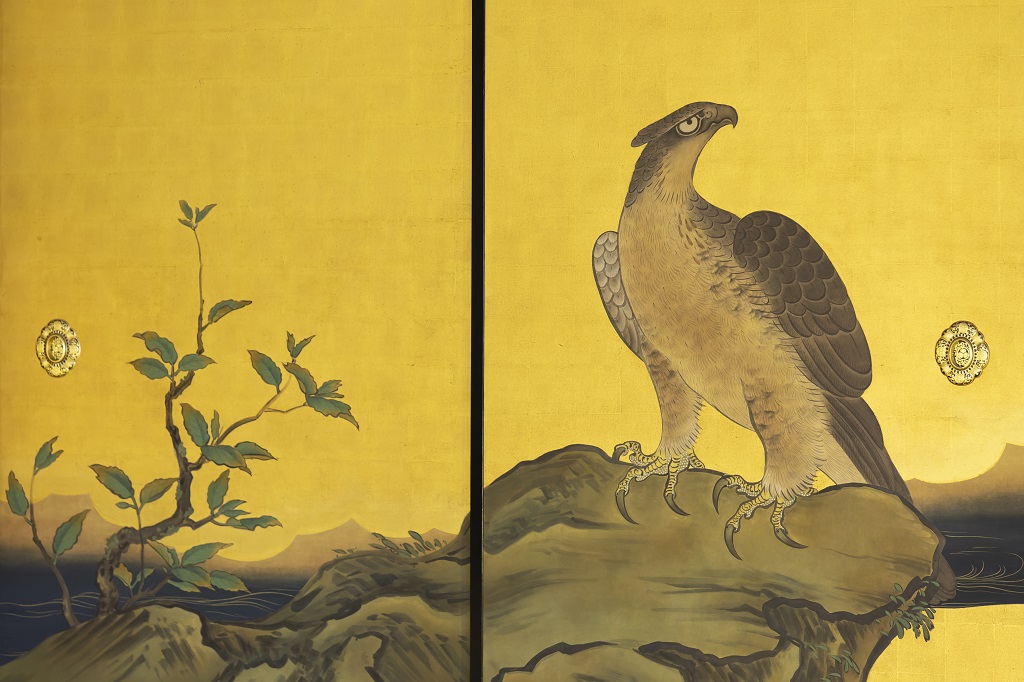
Making our way through the palace, we saw a succession of beautifully painted sliding doors, featuring tigers, birds, pines, cherry blossoms, and finally maples. You would never know the meaning behind all these motifs on a visit by yourself, but our guide was ready, letting us know the deep meanings and their practical uses when the castle was still used by the shogun.
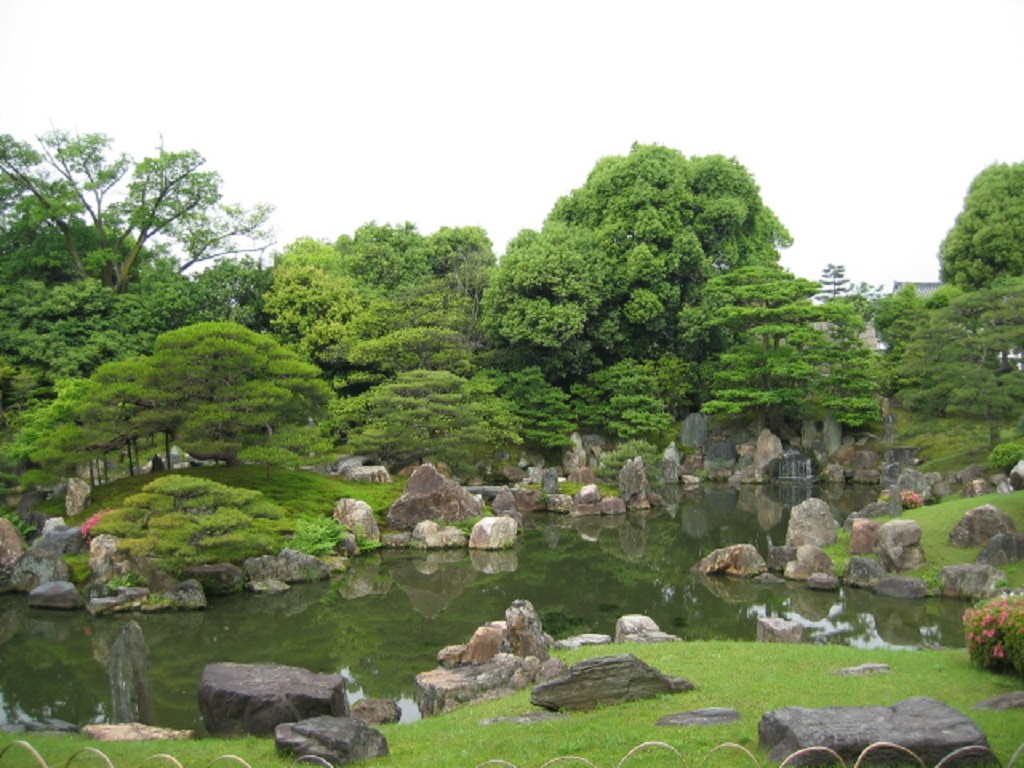
After walking on the creaky nightingale floors of Ninomaru Palace, we made our way outside and towards the castle gardens. The amazing way the stones were laid out, the water, the trees—everything was all so perfectly manicured. Some of the trees were even dressed up in coats of straw for winter. Quite an interesting sight to see!
Our guide brought us through more gardens, and finally, to the closed off area of the castle into which only participants on this tour are allowed. I’ll leave the details as a surprise for you when you visit!
This tour was well worth the price. Having a KVH guide leading us around and giving commentary throughout the tour gave context to the structures and decorations that I would not have had otherwise. I would highly recommend this tour for those interested in getting a basic introduction to Japanese history and society, and for those who really want to make the most out of their time at Nijo-jo Castle!
Transportation:
Subway: Take Tozai Line to Nijo-jo-mae (Nijo-jo Castle) Station
Bus: Take Kyoto City Bus 9 or 50, to “Nijo-jo-mae (Nijo-jo Castle)” bus stop from Kyoto Station
Time:
Everyday (from October 1, 2024 to March 31, 2025)
(60 minutes)
※Without every Tuesday in December and December 26 to January 3
Price:
2,500 yen
*Admission to Nijo-jo Castle and Ninomaru Palace not included
How to Participate:
Reservations available


